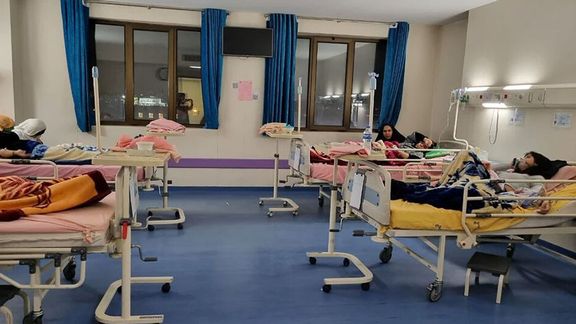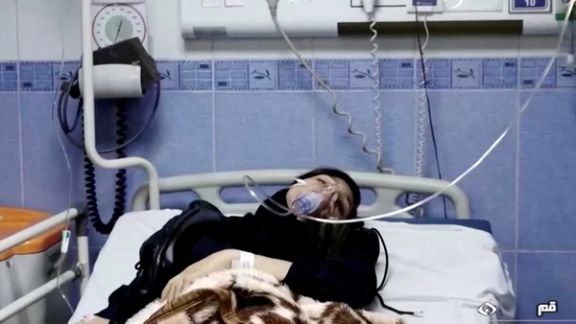Iran's Intelligence Ministry Denies Use Of Poisons In School Attacks

Iran's intelligence ministry said poisonous gas attacks on girls’ schools were pranks, blaming “enemies” for taking advantage of the incidents to discredit the regime.

Iran's intelligence ministry said poisonous gas attacks on girls’ schools were pranks, blaming “enemies” for taking advantage of the incidents to discredit the regime.
In a statement Friday, the ministry denied any indication that poisonous substances had caused the illness of students and said samples taken from the scene of the incidents examined by “the most reliable laboratories” in the country had not yielded any suspicious materials.
The report followed months of demands by people on social media and even some newspapers for the government to tell the public what was happening to schoolgirls.
The ministry attributed the hundreds of hospitalizations to stink bombs (stinkpots) often used for creating unpleasant smells by pranksters, pepper sprays, tear gas and similar substances used by students to disrupt classes. It even mentioned spurious causes, such as gas fuel leak from vehicles and urban gas, smoke from trash burning outside schools, and mass psychogenic illness resulting from stress.
However, some of the students had to be hospitalized for up to a week due to the severeness of their symptoms but most others were released within hours. In some cases, symptoms have lasted for weeks.
It also claimed that nearly all the students hospitalized following the incidents had recovered by simple treatments such as oxygen, saline and dextrose intravenous injections, and sedatives to treat anxiety.

A considerable number of students had faked illness after other students in the same class or school said they were ill, and the most reported cases of illness were in the southwestern province of Khuzestan.
The poisonings started in the religious city of Qom in central Iran November 30, but the intelligence ministry claimed that the first incident had taken place in Noor, Mazandaran Province, much earlier on November 6, and spread to other provinces in late February.
Many Iranians believe that the attacks which mainly target girls’ schools were perpetrated by the regime itself or a network of extremists who wanted to scare girls and keep them away from schools and called it “state terrorism”, but the ministry denied the existence of any such network.
The ministry tried to blame social media for the incidents, saying that suspicious networks spread rumors.
Naturally, once the attacks began, thousands of people began discussing it on social media.
However, after months of incidents at schools, police have not arrested anyone, although they have made vague claims of detaining 100 suspects.
The statement accused “foreign enemies” and media outside Iran, particularly those broadcasting in Persian, of using school poisoning incidents to ignite unrest because the Mahsa protests that started in mid-September had begun to subside.
In some cases, the statement claimed, the incidents were perpetrated with “anti-security goals against the people” by those who wanted to make footage of these incidents and send them to “hostile Persian-language media” outside Iran. “Perpetrators of such cases were arrested in most cases and handed over to judicial authorities,” the ministry said.
Again, the government has produced no proof of any such arrests, as they blame any negative incident or news to foreign enemies.
These “individuals with hostile motivations”, the ministry’s statement said, were under investigation to reveal their possible connection with terrorist organizations such as the Mujahedin-e Khalq Organization (MEK).
In March, the local channel of the state television in Fars province aired the so-called ‘confessions’ of a man and his daughter arrested and accused of attacking schools with N2 gas canisters.
The police chief alleged that the accused had also made recordings of the school attacks and sent it to “hostile media including Iran International TV”. He claimed that the accused girls confessed they wanted to create an atmosphere of insecurity in schools and defame the Islamic Republic.